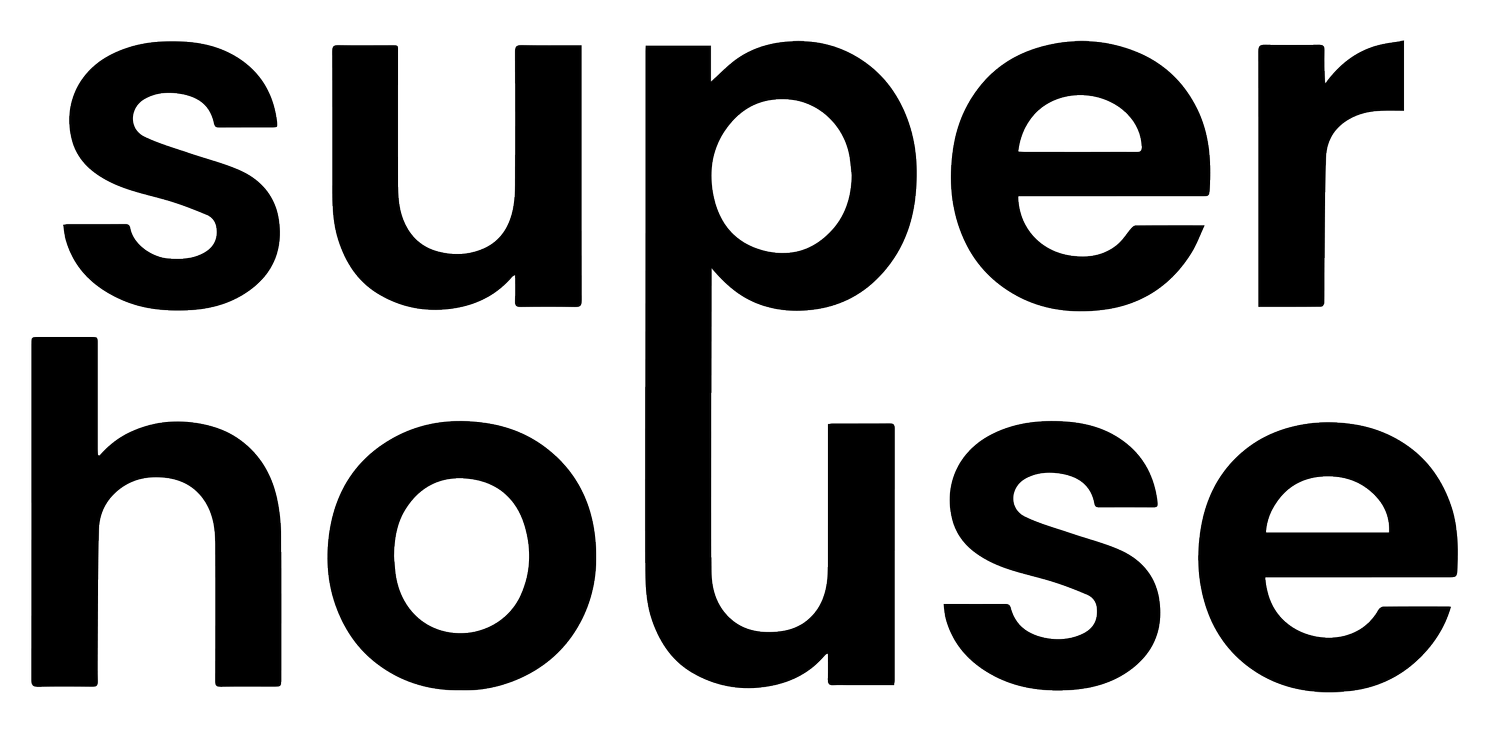Exhibitions
Why Shouldn’t I
Have Fun All Day
Dan Friedman
February 6 - March 22, 2025
Installation view (All photography by Matthew Gordon)
Superhouse is thrilled to present the first solo gallery exhibition of Dan Friedman in 30 years, Why Shouldn't I Have Fun All Day?, in collaboration with the artist’s estate. The show, focusing on Friedman’s innovative art furniture and sculpture, follows the landmark 2023 retrospective at The Art Institute of Chicago. Showcasing masterworks from the 1980s — a decade of massive creative output for Friedman — the exhibition features iconic pieces once exhibited at Patti Astor’s legendary East Village Fun Gallery, alongside works from the artist’s private collection, many of which have never been seen by the public.
Dan Friedman Basic Screen, 1981. This is Friedman’s first folding screen.
Installation view
As we commemorate the 30th anniversary of Friedman's passing in 1995 due to complications related to AIDS, Why Shouldn't I Have Fun All Day? offers an intimate glimpse into the artist's domestic life, featuring a selection of artworks from his collection and those of close friends and family. Friedman, a groundbreaking graphic designer and artist, played a pivotal role in the Lower East Side art scene of the 1980s, forming lasting friendships and collaborations with influential contemporaries such as Keith Haring, Kenny Scharf, and Willi Smith.
In the late 1970s, while working as a corporate design executive and a Yale University professor, Friedman began to transform his one-bedroom apartment in a conventional high-rise overlooking Washington Square Park into a living "sketchbook" for his art. He utilized every surface—from walls to ceilings to appliances—as a canvas, developing experimental ideas around shape, volume, and color. His innovative approach challenged the orthodoxy of "good design." As Friedman stated: "I created an extreme caricature of the beautiful modern American home to bring into question our notion of what is a beautiful modern American home." The installation of Why Shouldn't I Have Fun All Day? evokes the atmosphere of Friedman's apartment as documented in his influential 1994 treatise, Radical Modernism, with works set against Day-Glo painted walls (the same paint Friedman used) and nestled among the artist's personal effects.
"I began to live a double life—out at night, meeting non-designers, artists," Friedman recalled at the outset of the 1980s. "I realized I was having more fun working at night in this other world, this other side of New York City. I thought, 'Why shouldn't I have fun all day?'" Friedman recognized the prevailing rigid, often humorless style that held authority at his day job at Pentagram—the largest independent design consultancy—no longer reflected his experience of the chaotic, media-saturated, and culturally diverse world of lower Manhattan. Thus, he left the corporate world to devote the remaining part of his life to making three-dimensional objects imbued with complexity and symbolic meaning that could cope with his lived experience.
The works on view in Why Shouldn't I Have Fun All Day? are examples of this productive period. The exhibition includes the spray-painted Basic Screen (1981), Friedman's first folding screen, which presents an early glimpse of the artist's embracing of the messy reality of his graffiti-covered urban landscape. (Friedman would go on to create numerous examples of distinct folding screens on casters, called "movable walls," to channel changing interests, moods, events, objects, and seasons.) The artist's grass-skirted dining table with classical dentil cornice, Wicky Wacky Table (1981), is on view, showcasing the artist's love of kitsch and pastiche. The exhibition also includes A Fallen Sky in a Regal Landscape (1985), a brilliant, neon-colored assemblage of city detritus, which once held pride of place in the artist's home and stands as Friedman's comment on the wastefulness of American consumerism.
"I have used my home to push modernist principles of structure and coherency to their wildest extreme," Friedman wrote in Radical Modernism. "I create elegant mutations, radiating with intense color and complexity, in a world that has deconstructed into a goofy ritualistic playground for daily life."
Dan Friedman Power Screen, 1984
Installation view
Dan Friedman Please Chair, 1982, originally designed for the NYC WilliWear offices.
Installation view
Dan Friedman Wicky Wacky Table, 1981.
Dan Friedman Time Piece (Atomic Clock), 1984
Dan Friedman A Fallen Sky in a Regal Landscape, 1985
About Dan Friedman
Dan Friedman was an internationally known artist, educator, and graphic designer. Born in 1945 in suburban Ohio, he went on to receive BFA from the Carnegie Institute of Technology (Pittsburgh, USA) and attended Hochschule für Gestaltung (Ulm, Germany) and Allgemeine Gewerbeschule (Basel, Switzerland). As a graphic designer, Friedman held positions at Anspach Grossman Portugal Inc. and Pentagram. As an educator, Friedman held positions at Yale University's Graduate School of Art and Graduate School of Architecture, The Cooper Union, and the State University of New York at Purchase. Beginning in the early 1980s, Friedman shifted from his corporate and academic career to focus on his art practice. He exhibited his genre-defying artwork at notable and iconic New York City galleries such as Tony Shafrazi Gallery, Fun Gallery, Art et Industrie, and Red Studio, as well as in Paris, France, at Galerie Neotu and Galerie Kreo. Shortly before his death due to complications from the virus that causes AIDS, the artist published Dan Friedman: Radical Modernism (1994), his treatise on his life and work with contributions from Jeffrey Deitch and Alessandro Mendini. In 2023, The Art Institute of Chicago staged the first museum retrospective focused on the artist's work, Dan Friedman: Stay Radical. Several prominent public collections hold Friedman's work, including The Art Institute of Chicago (Chicago, USA), The Cooper Hewitt, Smithsonian Design Museum (New York, USA), Gewerbemuseum (Basel, Switzerland), The Montreal Museum of Fine Arts (Montreal, Canada), Museum of Modern Art (New York, USA), and San Francisco Museum of Modern Art (San Francisco, USA). See more.
















